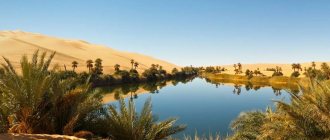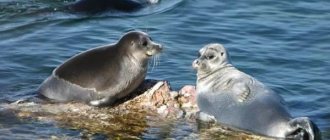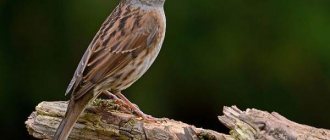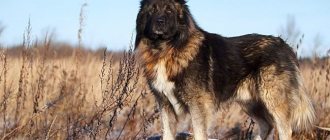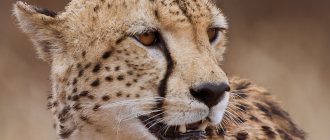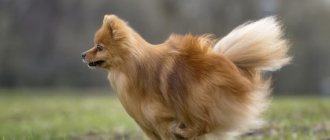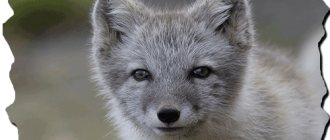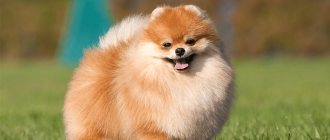The Urals is a region of the Russian Federation, most of which is occupied by a system of mountain ranges called the Ural Mountains. They stretch for 2,500 kilometers, as if dividing the country into European and Asian parts. By the way, this is where the unofficial border between Europe and Asia passes, as evidenced by numerous signs on the roads.
The nature in the Urals is extremely diverse. There are steppes, serious heights, river valleys, and also majestic forests. The fauna matches the environment. Here you can find both the red deer and the garden dormouse.
Reindeer
This animal belongs to the artiodactyl mammals. Only in this species the females wear horns in the same way as the males. They move without problems on the snowy surface, thanks to their wide hooves.
Deer have excellent hearing. But their vision leaves much to be desired. In reindeer herds, primacy belongs to the leader. In the winter season, animals get food from under the snow.
At other times of the year, reindeer feed on mushrooms, algae, bird eggs and sea water. It is impossible to make a reindeer as a pet. Even if you manage to do this, you need to make every effort to care for it.
Otherwise, this freedom-loving animal may turn wild again. In the Northern regions, wealth is measured not in money, but in the presence of reindeer. The more of them, the richer the person is considered.
Pictured are reindeer
↑ Lakes and rivers
The Ural ridge is the border of the water basins formed by the Volga and Ob. The rivers of the Urals originate from fontanelles on mountain slopes, lowland swamps or lakes:
- the waters of Vishera, Chusovaya, Belaya and Ufa flow to the Volga.
- the water of Northern Sosva, Pelym, Tura and Iset flows towards the Ob.
- to the north, into the ocean, the Pechora flows.
- to the south, into the Caspian Sea, flows one, the longest river, the Ural, 2534 km.
The second longest is Kama - 2030 km. The remaining rivers do not exceed 1000 km, except for the Belaya, Tobol and Tura. The number of lakes exceeds 3000. There are many fresh and brackish water bodies, even with bitterly salty water.
Lake Terenkul photo
The list of interesting lakes is supplemented by karst lakes, floodplain oxbow lakes and fog lakes. There are many natural reservoirs in the eastern foothills of the South and Middle Urals, as well as in the swampy taiga in the northern Trans-Urals.
Hoofed lemming
This mammal belongs to the hamster family. The lemming is of medium size. The tail is no longer than the hind feet. There is lint on the animal's paws. These animals live in a variety of places.
Their diet includes leaves and tree bark. Rodent activity is constant. They are always awake. The homes of these animals have a complex structure; they have more than one entrance and exit.
This is what their burrows look like. For the winter period, lemmings equip warm nests covered with wool. For each season of the year, animals have their own original colors. In winter they are pure white and light fawn.
In the summer they turn red or brown. They have a clearly visible black stripe along their back. Their neck is crowned with a barely noticeable light necklace. Young lemmings can be distinguished in spring by their creamy tones.
In the photo there is a lemming
Waterfowl
Many of them are not only good swimmers, but also excellent divers. Waterfowl are distinguished by a flattened, boat-like body and have pronounced webbed feet and limbs moved closer to the tail. Outside the water they become clumsy and walk, waddling like ducks.
Cormorant
A heavy (up to 3 kg) aquatic bird with a remarkable appearance, with a stocky build and a relatively long tail/neck. The beak ends in a hook and is decorated with a bright yellow spot at the base. The great cormorant is painted black with a metallic tint, in contrast to the light throat and chest.
The bird swims excellently, diving to a depth of 4 m, but on land it moves uncertainly, strongly straightening its body.
Cormorants climb trees, especially chicks, and settle on low banks framing clean, slow-moving ponds. Here cormorants hunt fish, shellfish and amphibians, without giving up insects and plants.
Peganka, or atayka
A beautiful bird (with the habits/exterior of both typical ducks and geese) with a crimson beak and striking plumage, which combines red, gray and black against a predominant white background. In the Urals, it is a fairly common, sometimes numerous duck that trusts a person and lets him get quite close.
It nests on the banks or at a short distance from reservoirs in which the atayka finds its food: mollusks, small crustaceans and aquatic insects. It begins breeding in April–July, building nests in abandoned burrows, holes or hollow trunks.
mute swan
It is so nicknamed because of the distinct hiss that males emit during the mating season, driving away competitors from their area. The mute swan lives up to almost 30 years, forming a single pair. Widely distributed in estuaries, lakes and even swamps, whose banks are rich in aquatic vegetation.
On land, the mute bird is content with grass and cereals: during seasonal molting, an adult bird eats up to 4 kg of plant food.
Eating aquatic plants, the mute fish grabs small things living there (crustaceans and mollusks), and is capable of diving to almost 1 meter. Swans hunting was banned more than half a century ago.
Arctic fox
This wonderful animal belongs to the fox family. They are small and fluffy. Arctic foxes grow from 45 to 70 cm in length. Their weight does not exceed 8 kg. Arctic foxes have fluffy white fur, which reliably protects them from severe frosts, because the habitat of these animals is in the northern hemisphere, where temperatures remain constant below zero.
The diet of arctic foxes includes food that they find themselves. There are times when there is practically no food. Then they find the leftovers of large predators and eat them with pleasure. These amazing animals live in places that, according to people, are absolutely unsuitable for life.
Animal arctic fox
Arctic desert
Animals of the Urals
The upper boundary of the region runs along the Franz Josef Land archipelago, the lower boundary - on Wrangel Island. The main feature of the Arctic desert is the presence of ice and snow throughout the year. The average temperature in winter is about -50º C. During this period, a lot of snow falls and strong winds blow. The polar night lasts 4 months. Summer temperatures average +4º C. August is considered the warmest month of the year.
There are no lakes or swamps. The flora is represented mainly by lichens. Here you can count several endemics: arctic willow, cotton grass, forget-me-not and chickweed. There are few animals in the Arctic due to the sparse flora. Polar bears, arctic foxes, reindeer and lemmings thrive in the cold desert. The rocky coasts are favored by eiders, guillemots and other birds. The shores of some islands are complete bird colonies.
Middendorff's vole
This animal can most often be found in the tundra in the Northern Urals. The vole prefers moss swamps. Its body reaches 130 mm in length, its tail is 35 mm long. In summer, they use sedge stems for food.
In the winter season, its root part is used. This animal stores food for future use. Vole nests can be seen at a level just above the ground, in blueberry and birch bushes.
Middendorff's vole
Flora of the Northern Urals
The Northern Urals are a place of formations of taiga forests, subalpine meadows and swamps.
The plains located at the foot of the mountains represent the taiga zone. Coniferous forests grow here, covered with a thick layer of moss. In some taiga areas you can find spruce and birch forests. Fir and rowan trees also grow there. Honeysuckle, wolf's bast and currants grow in the undergrowth. The spruce-fir taiga is famous for its large quantities of blueberries, blueberries, cranberries and cloudberries.
The eastern slopes of the Northern Urals are somewhat different from the western ones. Here, for the most part, pine forests grow, in which birches, cedars and spruces are found. The soil of the eastern bogs is suitable for the growth of polar birch, wild rosemary, heather and sedge. The eastern vegetation is also characterized by the presence of larches, in the undergrowth of which grow juniper, raspberries, alders and currants.
Mountain vegetation consists of low-growing trees - birch and cedar. And the upper boundary of the forests is a birch forest with wild rosemary and blueberries. Behind these forests begin alpine meadows and shrub tundra, in which only mosses and lichens can be found.
The Northern Urals are rich in medicinal plants. The following grow here: chickweed, St. John's wort, wild strawberry, fireweed, swamp cranberry, stony stoneweed, stinging nettle, cinquefoil, common mantle, coltsfoot and others.
Partridge
These creatures are absolutely not afraid of the proximity of people. On the contrary, they are trying to settle closer to populated areas. And in winter, they even look for overnight shelter in courtyards or near other people’s buildings. Partridges are slightly larger than pigeons. Females are practically no different from their males.
These are sedentary creatures. Partridges can leave their permanent habitats only due to hunger or human activity. Most of their time is spent searching for food. They don't rise very high. The flight is smooth and calm.
It is a collective creation. There are up to 30 individuals in a flock of partridges. Only in the spring do they break up into pairs. Partridge activity peaks in the morning and evening. They prefer to sit out during the day and night in bushes and thickets of tall grass.
In the photo there is a partridge bird
Geographical location of the Urals
The region is located between two plains - West Siberian and East European. In the North, the Ural Mountains reach almost to the Arctic Ocean, and in the South, they adjoin the territories of Kazakhstan.
Natural areas
Due to their extraordinary breadth and extent, these lands are usually divided into several parts, each of which is characterized by its own natural zone.
There are four in total:
- the polar one is known for its tundras and forest-tundras;
- the northern edge begins with forest-tundra and continues with taiga;
- on the lands of the Middle Urals there is taiga, below there are forest-steppes;
- finally, the southern part is characterized by steppes located below the forest-steppe areas.
As you can see, the Urals are distinguished by outstanding diversity, collecting almost all types of natural zones with the exception of deserts.
Relief and climate
The relief of the region consists of mountain ranges located parallel to each other. They are not too high (they rise at different points only up to 1600 m), with rounded or flat tops. Stone ridges lie in disarray on the peaks. Rivers flow and valleys run between the ridges.
The climate of the Urals is typical for mountainous areas. On the western side of the mountains there is more precipitation, while in the East the weather is arid and the climate here is closer to continental. Moreover, the further into the mountains, the less noticeable are the continental climate features. In the very north of the region the climate is subarctic, below it is temperate.
Hydrography
The region is famous for its abundance of rivers, which has a beneficial effect on the wealth of local wildlife. From the North, the territories cover the shores of the Arctic seas: Kara and Barents. Cold cyclones bring snowy and frosty winters here, especially along the shores of the Barents Sea, however, the ice in these places still melts in the warm season.
The rivers of the region constitute the main watershed of the Arctic Ocean, while in the western part of the mountains their channels are more complex and winding (Usa, Pechora). Eastern rivers flow from the Ob: Tavda, Tura, Iset, Tobol, etc.
The most famous of their local rivers is the Ural, which belongs to the Caspian basin.
Local rivers are fast, their banks are mostly rocky. It is the combination of deep reservoirs and green valleys that creates an excellent habitat for many species of animals.
Bear
People learn about these animals from an early age. They are the main characters of the most beloved children's fairy tales. This is the largest animal at the same time it is the least predatory.
The bear's favorite delicacy is succulent grass roots, young plant stems, berries, and cedar nuts. The bear eats fish not without pleasure. He does not disdain carrion. Sometimes, during times of famine, bears attack moose.
As for the relationship of this beast with man, he is more afraid of him than aggressive towards him. But don't relax when you see a bear. Under no circumstances should he be offended or disturbed in his den.
From a calm, half-asleep animal, he can quickly turn into an aggressive beast. Its behavior towards humans is unpredictable when the bear is hungry. At such moments it is better to avoid him.
Film about the nature of the Urals
* * *
The rich nature of the Urals is reflected in literature and art. The writer D.N. wrote best about the Ural nature. Mamin-Sibiryak. The Urals have been depicted in paintings by many artists; photographers have been photographing them since the end of the 19th century.
Many travelers, having once visited the Urals and admired its nature, want to return here again and again. Appreciate and take care of the nature of the Urals!
© UraloVed.ru
See also:
Ural Mountains
Ecology of the Urals
Reserves and national parks of the Urals
Support Uraloved
Elk
This forest dweller inspires respect and fear with his menacing appearance. Moose are large and strong. They have tall limbs and a relatively short body. The humped muzzle and heavy horns of the males are considered by everyone to be a symbol of the taiga.
The favorite places of this animal are pine forests, old burnt areas and clearings. It is in such places that there is a sufficient amount of undergrowth. The favorite food of these wild animals of the Urals are tree branches, and they love pine trees the most. They often settle on river banks and in swamp areas. In the autumn season, moose move from west to east. They return back in the spring.
Animals of the Red Book of the Urals
As such, the Red Book of the Urals does not exist. Each region has its own Red Book. In principle, creating a general list of rare and endangered animal species for the entire Urals as a whole is not difficult, but it will add little to regional registers, and in order to provide practical assistance, you will still need to focus on local standards.
Animals of the Red Book of the Urals include bats (water bat, long-whiskered bat, pond bat, northern leather bat, etc.) and rodents (flying squirrel, garden dormouse, Djungarian hamster, forest lemming, large jerboa, gray hamster). Let's look at some types in more detail.
Common hedgehog
This representative of the order of insectivorous animals is listed in the Red Book of the Sverdlovsk Region. These animals eat a lot of insects and slugs, which pose a danger to both forests and garden plots.
The common hedgehog is, perhaps, one of the few animals that allows humans to come within very close range. But this happens not at all because the hedgehog is a brave fellow, but because of his poor eyesight. Therefore, hedgehogs prefer to rely on their sense of smell. But their nose often fails them: if the wind blows in the opposite direction, these animals are not able to smell the approach of a person or animal.
These insectivores hunt at night. When hunting, the common hedgehog is a dexterous and agile animal. The animal not only destroys harmful insects, but is also not averse to feasting on poisonous snakes. By the way, viper venom has practically no effect on the common hedgehog.
Despite its thorns, the hedgehog cannot boast of complete protection from enemies, of which it has plenty: large owls, eagle owls, hawks, foxes and, of course, the man who did everything to ensure that the population of this insectivore was in danger of extinction.
Muskrat
The human factor, namely human greed, is the reason why these animals are on the verge of extinction. When their population was at its proper level, muskrats were exterminated en masse because of their beautiful and valuable fur. Breeding muskrats for the same purpose contributed to the displacement of muskrats from their natural habitats.
steppe cat
This animal is assigned not too dangerous category No. 3 in the Red Book of the Orenburg Region. The prey of steppe cats is birds and small rodents. The winter period, as you know, is a difficult time for the wild animals of the Urals. Steppe cats, for lack of prey, can wander into a person’s home to profit from, for example, chickens.
Hare
There's no big need to tell everyone who it is. Just like the bear, fox and wolf, the hare is a painfully familiar specimen. Everyone's favorite cartoon, “Well, wait a minute!” introduces children to it from an early age.
White hares live in the Urals. They prefer places where there is a lot of young undergrowth, clearings and burning areas. Animals take rest wherever they can. This could be a bush or a leaning tree. That is why the animal can often jump out suddenly, it seems almost from under your feet.
↑ Attractions
People come to the Urals specifically to look at the famous wonders of the Ural nature:
- weathering pillars on the Manpupuner Plateau;
- Kapova Cave, where ancient rock paintings are preserved;
- underwater gypsum Orda cave;
- Kungur Ice Cave;
- the Chusovaya River and Mount Narodnaya;
- walk around the Taganay National Park and visit many other places.
Tourists come to admire the main attraction, the Nugush Reservoir, calling the reservoir “Mountain Tale”, “Pearl of Bashkiria” and “Sea of 3 Cities”. Mount Sumoyak is loved by psychics; they climb here to get a boost of energy and strength.
Wolf and fox
The wolf and the fox are fairly well-known predators of the forest. Foxes love to live in sparse forests, along rivers, and near human settlements. This red-haired predatory beauty prefers to eat birds, rodents, insects and frogs.
Sometimes hares become victims of foxes. But this doesn't happen as often as people say. As for the wolf, it is a much more serious predator. Its victims are wild ungulates. The wolf prefers elk and deer.
Most often it attacks them when they are unhealthy and weakened. Wolves never refuse food from hares, foxes and small mice. In the winter season, these animals unite in packs and pose a great danger to humans, although there are isolated cases of their attacks on people.
Ridges and cliffs of the Ural Mountains.
Many cliffs of the Ural ridge also have their own names, for example, Bear Stone, which from afar resembles the gray back of a bear glimpsed among the green trees. Climbers use the hundred-meter steep cliff for their training. Unfortunately, it is gradually being destroyed. In the rock, archaeologists discovered a grotto in which there was a site for ancient people.
Not far from Yekaterinburg in the Visimsky Nature Reserve there is an outcrop of rocks. An attentive eye will immediately discern in it the outlines of a man whose head is covered with a cap. They call him Old Man Stone. If you climb to its top, you can admire the panorama of Nizhny Tagil.
Wolverine
This animal is a large predator. He has large paws and a rather fluffy tail. The carcasses of elk and reindeer are the most favorite food of wolverines. Sometimes they attack these animals.
This happens if they are sick. Otherwise, Wolverine will not be able to defeat them. Rodents, game and small foxes are also used. It is not important for these animals to live in any particular place. They can travel long distances in search of food.
In the photo there is a wolverine
Message about the Ural Mountains
Mountain system in the Urals, located between the East European and West Siberian plains. The Ural Mountains are located on the territory of Russia and Kazakhstan and are a unique geographical feature that divides the Eurasian continent into two parts.
In ancient sources, the Ural Mountains were called Riphean or Hyperborean. Russian pioneers called them “Stone”. The toponym “Ural” was most likely taken from the Bashkir language and means “stone belt”.
Length more than 2000 km, width from 40 to 150 km. Altitude: 1,895 m. Area: 781,100 km2
The formation of the Ural mountain system began about 350 million years ago and ended about 200 million years ago.
The mountains originate from the shores of the Arctic Ocean and end in the sultry deserts of Kazakhstan.
Minerals of the Ural Mountains In the depths of the Urals are hidden countless riches known to the whole world. This includes the famous malachite, and semi-precious stones, colorfully described by Bazhov in his fairy tales, asbestos, platinum, gold and other minerals. Of the 55 types of important minerals that were developed in the USSR, 48 are represented in the Urals.
Nature of the Ural Mountains
This region is famous for its incredible natural beauty. People come here to look at the amazing mountains, plunge into the clear waters of numerous lakes, go down into caves or raft down the stormy rivers of the Ural Mountains. The beauty of these mountains is best seen in natural parks and reserves. Once in the Sverdlovsk region, you definitely need to visit Oleniye Ruchyi. Tourists come here to see the drawings of ancient people painted on the surface of the rock. In the Kapova Cave, scientists discovered rock paintings that are more than 14 thousand years old. In total, about 200 works by ancient artists were found in its vastness. In addition, you can visit numerous halls, grottoes and galleries, located on three levels, and admire the underground lakes.
Fauna of the Ural Mountains
The fauna of the “Earth Belt” is no less diverse. A predominant position in the local fauna is occupied by forest animals, whose habitat is coniferous, broad-leaved or mixed forests. Thus, squirrels live in coniferous forests, the main diet of which is spruce seeds, and in winter these cute animals with a fluffy tail feed on previously stored pine nuts and dried mushrooms. The marten is widespread in local forests, the existence of which is difficult to imagine without the already mentioned squirrel, which this predator hunts. But the real wealth of these places is the fur-bearing game animals, the fame of which extends far beyond the region, for example, the sable, which lives in the forests of the Northern Urals. It, however, differs from the dark Siberian sable in its less beautiful skin of a reddish color. Uncontrolled hunting for valuable furry animals is prohibited by law. Without this ban, it would probably have been completely destroyed by now. The taiga forests of the Ural Mountains are also home to the traditional Russian wolf, bear and elk. Roe deer are found in mixed forests. On the plains adjacent to the mountain ranges, the brown hare and fox feel at ease. We did not make a reservation: they live precisely on flat terrain, and for them the forest is just a shelter. And, of course, the tree crowns are well inhabited by many species of birds.
Lynx
This wonderful northern cat is known to many. It is easy to recognize by the tassels on its ears, sideburns and small tail. The weight of an adult lynx is about 25 kg. The color of the animal is reddish-brown or pale-smoky.
The vigilance and sensitivity are enviable. In addition, she has excellent hearing. A lynx can detect the sound or footsteps of a prey several kilometers away, but will not attack immediately.
At first she sneaks up cleverly and cunningly. For hunting he chooses the dark time of day. The height of this animal is equal to the height of two adults. The lynx's main food is field mice.
She does not refuse the hare, black grouse and artiodactyls. Sometimes, when this animal appears in a populated area, cats or dogs may suffer from the lynx.
May attack a fox. But not in order to eat it, but simply for the sake of prey. Lynx needs two kilograms of meat per day. This beautiful wild cat is not afraid of humans.
Steppe zone
The natural zone is located on the East European Plain and Western Siberia. In winter, the eastern part of the zone is colder than the west. In summer, the average temperature is +20° C. Maximum precipitation occurs in June. There is an alternation of wet and dry seasons. The soil is chernozem, well suited for growing cereals. Some areas are undergoing erosion.
The steppe is dominated by herbaceous vegetation: clover, bluegrass, and wild oats. Sometimes there are shrubs in the area: broom, spirea, wolfberry and blackthorn. All plants are excellent food sources for animals. In the steppes there are a large number of voles, marmots and pikas. The world of predators is represented by ferrets, foxes and wolves. This natural complex is home to birds of prey: owls, hawks, harriers and buzzards.
Sable
This taiga resident differs from many animals in his agility and strength. Lives on the ground. Moves by jumping. At the same time, sables are excellent at moving through trees.
They have well-developed hearing and sense of smell. This cannot be said about vision; the sable cannot boast of it. This animal makes a cat-like purr. Moves easily on loose snow.
The animal is active in the morning and evening. His favorite habitats are cedar trees, headwaters of mountain rivers, dwarf elfin thickets, and rocky outcrops. Only occasionally can you see a sable in the crown of a tree. They prefer to hunt alone. Most of all, they don’t like to see stoats on their lands.
The animal in the photo is sable
Animals of the Southern Urals
Forest, steppe and tundra vegetation zones are combined here. The rich world of flora of the Southern Urals has allowed small and rare animals to survive in this territory. In particular, this is where representatives of the steppe zones live: voles, gophers, jerboas, hamsters, and steppe marmots.
Animals of the Southern Urals are represented by wolverines, brown bears, squirrels, arctic foxes, sables, hazel grouse, wood grouse, horned larks and even reindeer. It’s hard to believe, but the horned representative of the Subpolar Urals migrated to the southern region following the movement of vegetation.
Brown bear
These animals are found everywhere here, but, fortunately, it is quite rare to see them. The weight of an adult male varies from 3 to 5 centners. In general, the bear is a common representative of the fauna world not only among the animals of the Southern Urals, but also among the entire animal world of the Urals .
By the way, it’s hard to call a bear a predator. The fact is that these furry heavyweights are omnivores: they eat meat and fish, as well as honey and wild berries.
In the fall, brown bears gain subcutaneous fat and hibernate. Bears that have not gained fat by autumn and have not slept for the winter become cranks. South Ural brown bears, like other brown bears, build dens on dry surfaces - under upturned tree roots.
Sable
Among the animals of this area, one can highlight the so-called “pearl of the Siberian taiga” - the sable. This animal is the national pride of Russia, since since the times of the Russian Empire it has formed the basis of the country’s fur wealth. This is a brave and dexterous predator. In one day, the animal is capable of running a huge distance of many kilometers. He readily climbs trees, but walks on the ground.
This animal hunts in different ways. He can, like a cat, sit in ambush and watch for a mouse, or he can persistently pursue a musk deer through the loose snow until it is exhausted. The main diet of the sable is small rodents. The sable often hunts large birds, fish, squirrels and even its smaller relatives - the ermine and the weasel. The sable also eats lingonberries, blueberries, rowan berries, and pine cones.
Marten
She has a beautiful slender body, 50-80 cm in length. The length of the animal's fluffy tail is 35-50 cm. They weigh from 0.5 to 5.7 kg. Males are usually larger than females. Martens have a brown-brown color.
These are agile animals that can perform any acrobatic trick. Little martens spend most of their free time playing. They never attack humans.
But if the marten, its home or children are threatened, they become monstrously aggressive. They use sharp teeth and claws of animals, which can cause great harm.
Where are the Ural Mountains located?
A peculiarity of the geographical location of this system is its length from north to south. The hills adorn the continent of Eurasia, mainly covering two countries - Russia and Kazakhstan. Part of the massif is located in the Arkhangelsk, Sverdlovsk, Orenburg, Chelyabinsk regions, Perm Territory, and Bashkortostan. The coordinates of the natural object - the mountains - run parallel to the 60th meridian.
The length of this mountain range is more than 2500 km, and the absolute height of the main peak is 1895 m. The average height of the Ural mountains is 1300-1400 m.
The highest peaks of the massif include:
- People's Mountain (recognized as the highest);
- Karpinsky Hill;
- Payer;
- Saber.
The highest point is located on the border separating the Komi Republic and the territory of Ugra (Khanty-Mansiysk Autonomous Okrug).
The Ural Mountains reach the shores of the Arctic Ocean, then disappear for some distance under water, continuing on Vaygach and the Novaya Zemlya archipelago. Thus, the massif stretches in a northerly direction for another 800 km. The maximum width of the “Stone Belt” is about 200 km. In some places it narrows to 50 km or more.
Beaver
This animal is the largest rodent in all of Russia. Can live both in water and in a hole. Thanks to its unique swimming membranes, the beaver feels great in the water.
It has a flat, hairless, plate-covered tail. In order to protect their burrows from the encroachments of others, beavers build dams. They consist of branches and trees.
Such dams can be up to 15 meters wide and block the flow of water to such an extent that it rises up to 1.5 meters. These animals feed on branches of willow, bird cherry, birch and aspen. In summer, grass comes into play.
Terms of delivery and pickup in Yekaterinburg, Sverdlovsk region
Nature, plants and animals of the Kirov region
Delivery within Yekaterinburg is FREE*
with an order value
of 1000 rubles.
The minimum delivery interval is 3 hours.
The minimum order value for pickup is 500 rubles.
The pick-up point is located at st. Otradnaya, 1 (next to the Rainbow Park shopping center)
Delivery schedule:
• delivery in Yekaterinburg on weekdays
from 11.00 to 21.00
• delivery in Yekaterinburg on Saturday
from 10.00 to 18.00
• orders placed on Saturday and Sunday are subject to delivery and pickup starting on Monday
Delivery schedule to remote areas
Even days
Odd
Weekdays
Saturday Weekdays Saturday
Shuvakish 17:00-20:00 15:00-18:00 11:00-16:00 11:00-15:00 Pyshma 17:00-20:00 15:00-18 :00 11:00-16:00 11:00-15:00 Baltym 17:00-20:00 15:00-18:00 11:00-16:00 11:00-15:00 Berezovsky 11:00- 16:00 11:00-15:00 17:00-20:00 15:00-18:00 Koltsovo 17:00-20:00 12:00-16:00 11:00-16:00 12:00- 16:00 Pervouralsk (Palkino, Severka village, Palkinsky peat bog) no deliveries 12:00-16:00 no deliveries 12:00-16:00 Palnix 11:00-17:00 12:00-16:00 11:00 -17:00 12:00-16:00 Karasyozersky - 1.2 11:00-17:00 12:00-16:00 11:00-17:00 12:00-16:00 Chusovsky tract 11:00- 15:00 12:00-16:00 11:00-15:00 12:00-16:00
Monday / Saturday
Aramil, Patrushi village, B. Istok, Istok 12:00-16:00
Delivery in the Sverdlovsk region
Delivery in the Sverdlovsk region is carried out by transport companies: Russian Post, DPD, E-KIT, SDEK, PEC, Zheldorekspeditsiya, RG Group, Meridian, Energy, FAS Trans, and other transport companies at the buyer's choice.
The cost of delivery in the Sverdlovsk region is from 100 rubles, the cost is calculated individually, and the manager will always tell you the delivery price!
Otter
She has one of the most valuable furs. From many descriptions of animals in the Urals , it is known that the number of otters has noticeably decreased. They are near-aquatic predators, so their burrows can be seen right next to the water.
Sometimes they rent beaver and muskrat holes. They lead a sedentary lifestyle provided they have something to eat. If the food supply deteriorates, they look for more nourishing places and migrate there.
The otter prefers exclusively animal food. Loves fish, frogs, crustaceans, insects, birds. This animal has practically no natural enemies or competitors.
The animal in the photo is an otter.
The fauna of the Urals is so interesting and rich that you can talk about it with passion and endlessly. Not everyone has the opportunity to visit this wonderful and fabulous corner. Photos of animals of the Urals will help , in which they look almost the same as in real life.
Ural Mountains
The highest of these mountains is Narodnaya, which is located in the north and its height is almost 2 kilometers.
The width of the Ural Mountains in some areas reaches 150 km!
The existence of the Ural Mountains was known in ancient times; in particular, the Greeks believed that the legendary country of Hyperborea was located behind these mountains.
Geology of the Urals
The Ural Mountains were not always so low. Their formation began 350 million years ago and during their “youth” the Ural mountains reached a height of six kilometers. There was a time when volcanoes were active in the mountains, strong earthquakes shook all living things, and magma, pouring out, formed new rocks.
Future mineral deposits were laid here. Millions of years have passed, the crazy volcanoes are no longer there, the mountains have collapsed and become small, but sometimes the Ural Mountains remember the dawn of stormy youth and earthquakes occur. The last one happened in the fall of 2015.
Nature of the Urals
Along the entire length of the mountain there are several natural zones - from the tundra in the north, taiga in the middle and ending with the steppe in the south.
It turns out that nature and the animal world are different everywhere.
If you can find deer in the north, then in the south you can find a marmot or gopher. When tulips bloom in the steppe in the south, there are still bitter frosts in the north.
The mountain slopes are not steep, but they perfectly interfere with the winds, so the climate of the European part differs from the climate of the Asian part of the mountains, and that is why they attract tourists and skiers from all over the world to their slopes, enjoying enormous popularity.
Rocks of the Urals
In the depths of the Urals there are many minerals located and mined. Some of them are very rare and are found only in the depths of the Ural Range. Among the most famous are:
- gold;
- silver;
- iron ore;
- copper ore;
- ornamental stones;
- oil;
- gas.
Everyone knows crafts and jewelry made from malachite, a beautiful green Ural stone.
Products made from it can be seen in the St. Petersburg Hermitage.
Many folk tales about the extraction of mineral wealth were processed by the storyteller P. P. Bazhov.
Population of the Urals
The majority of the population lives in large industrial cities. In terms of national composition, they are mainly Russian. Next come the Tatars, Bashkirs, Ukrainians, Kazakhs, Mansi, Khanty and other nationalities.
Industry of the Urals
In the Ural region, in particular in the Middle Urals and Southern Urals, the most common industries are metallurgy and mechanical engineering. It is known that copper ore was mined here even before our era. The modern period of development of metallurgy began under Peter I, with the Demidov factories and mines.
The industrial cities of Chelyabinsk, the capital of the Southern Urals with its ChTPZ, and Yekaterinburg, as the capital of the Urals, with its Uralmash, are known all over the world.
There are rail, road and air connections between all cities in the region.
The only negative is that highly developed industry pollutes the atmosphere and adversely affects people's health.
However, this does not stop those who know that the Ural Mountains are a natural border between Europe and Asia, and want to plunge into this atmosphere.
Have fun travels and excursions to the Ural Mountains.
Reptiles and amphibians
The fauna of reptiles is represented by six species, of which three species are from the suborder Lizards: brittle spindle, viviparous lizard, quick lizard; and three species from the suborder Snakes: the common viper, the common copperhead, and the common snake. Brittle spiny grass and common copperhead are included in the Red Book of the Sverdlovsk Region in the “Rare” category.
The common snake is easily distinguishable from other snakes by its “yellow ears” - pronounced spots on the head.
The amphibian fauna includes nine species, of which three species are from the order Caudate amphibians: crested newt, common newt, Siberian salamander; and six species from the order Tailless: common toad, lake frog, sharp-faced frog, Siberian frog, grass frog, common spadefoot. The Red Data Book of the Sverdlovsk Region includes the Siberian salamander in the “Uncertain status” category, the crested newt in the “Decreasing in numbers” category, the common spadefoot and the Siberian frog in the “Rare” category.
This is interesting: Birds of central Russia - list, characteristics and photos
Nature of Russian regions
Southern Ural natural landscapes have been formed over millions of years.
Many climatic zones and a variety of topography have created the conditions for mountain ranges, taiga forests and picturesque plains to coexist within one Russian region. The fantastic beauty of mirror lakes and deep rivers, most of them originating from the largest mountain Iremel, was glorified in ancient legends and tales about the riches of the Ural land. The Southern Urals are still not fully explored and still conceal many mysteries.
